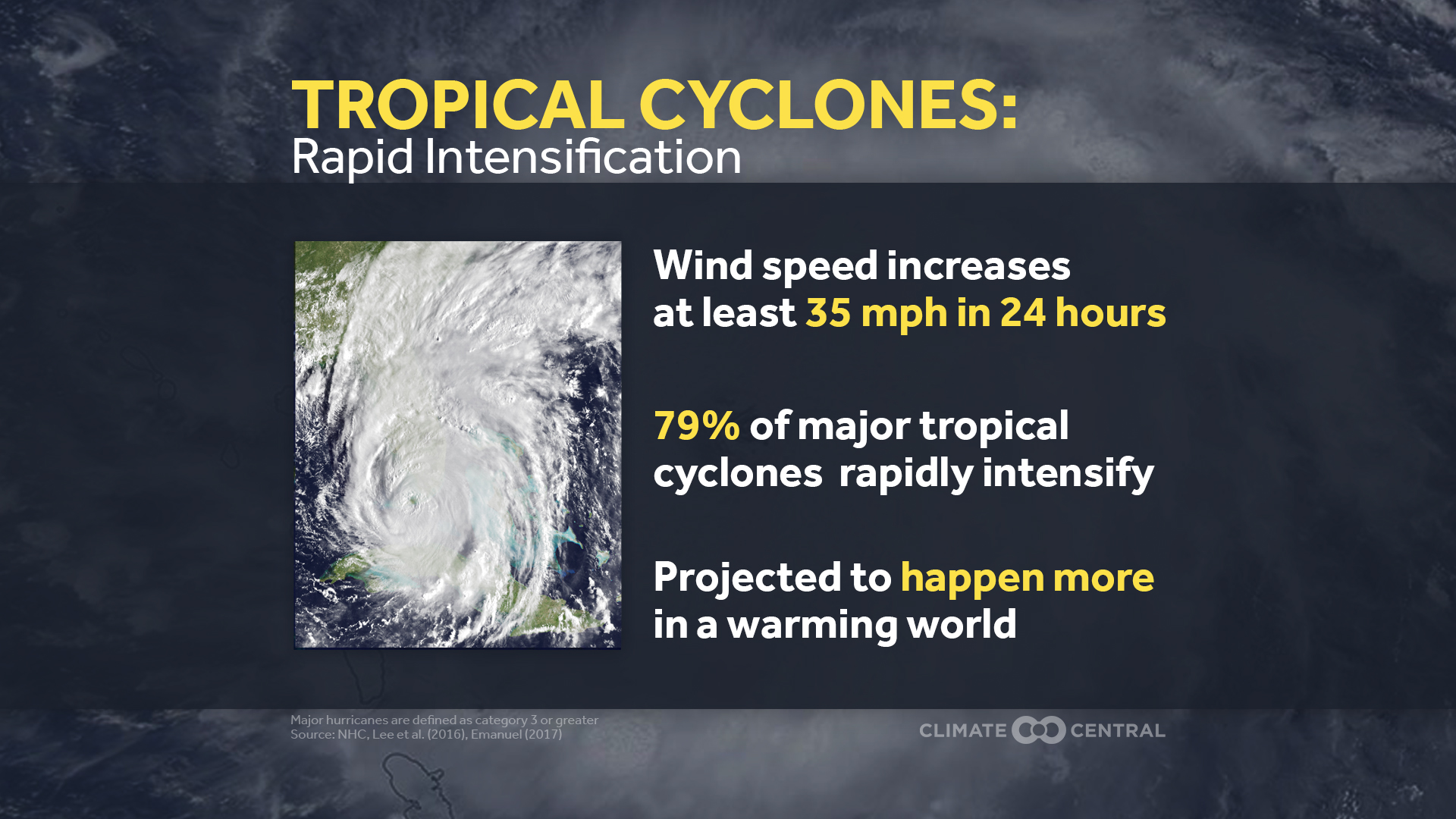Hurricane Helene (2024) and Climate Change
How oceans warmed by climate change strengthened this tropical cyclone
Climate change's effect on Hurricane Helene (2024)
Human-caused ocean warming increased Hurricane Helene’s maximum sustained wind speed by 10 miles per hour (mph).
Helene rapidly intensified by about 50 mph in 18 hours over Gulf of Mexico waters, where sea surface temperatures were made six to 400 times more likely by climate change, according to the Climate Shift Index: Ocean.
On September 27, 2025, Helene made landfall in Florida’s Big Bend region as the strongest hurricane ever recorded in the region — a Category 4 — before weakening to Category 2 strength as it moved into Georgia.
The storm delivered a 7-foot storm surge along Florida’s coast (Tampa), brought record-breaking rainfall that devastated the southeast U.S., and became the deadliest storm to hit the mainland U.S. since Katrina (2005).
Peak storm point
Helene at its peak
At its peak in the Gulf of Mexico near Florida, Hurricane Helene had maximum sustained wind speeds of 140 mph. These wind speeds were made 10 mph stronger as a result of climate change.
Hurricane Helene achieved its top wind speeds in waters that were 0.9°C (1.6°F) warmer as a result of climate change. Climate change made these temperatures at least six times more likely.
Category 4
140 mph
How did climate change fuel Helene?
Human-caused carbon emissions trap heat in the atmosphere, and the oceans have absorbed about 93% of that excess heat since 1970. This is due to their vast depth and area, and seawater's higher capacity for retaining heat compared to air. Every tenth of a degree of ocean warming increases the risks of stronger storms and higher sea levels.
Helene rapidly intensified over ocean temperatures that were made 1.2°C (2.2°F) warmer, on average, and six to 400 times more likely because of climate change. Those warm waters caused by climate change fueled Helen’s wind speeds, increasing the storm’s maximum sustained wind speeds by 10 mph.
Small increases in wind speed can dramatically raise the destructive power of a storm, according to NOAA’s assessment of hurricane damage potential. The added intensity of 10 mph because of climate change increased Helene's potential damages by up to xx%.
Additionally, climate change contributes to sea level rise, which can amplify the storm surge potential. Helene produced a catastrophic storm surge, with inundation levels of 16 ft in some areas, according to NOAA.

Hurricane Helene and rapid intensification
Hurricane Helene experienced rapid intensification over sea surfaces warmed by climate change.
Rapid intensification refers to an increase in a tropical cyclone’s maximum sustained winds of at least 30 knots (about 35 mph) within 24 hours.
Helene's maximum wind speed increased ~50 mph in 18 hours.

Learn more about the science
The Climate Shift Index: Tropical Cyclones (Tropical Cyclone CSI) builds on the foundation of our Climate Shift Index: Ocean (Ocean CSI).
Ocean CSI is a peer-reviewed system developed by Climate Central to measure the fingerprint of climate change on ocean temperatures. It indicates how human-caused climate change — driven by humans burning fossil fuels and emitting aerosols — has influenced the likelihood of daily sea surface temperatures at nearly any location around the world's oceans.
As ocean temperatures warm in response to climate change, they provide fuel for tropical cyclones (including hurricanes), increasing their wind speeds. Tropical Cyclone CSI, also developed from peer-reviewed research, quantifies this effect by calculating the increase (or decrease) in a tropical cyclone's wind speeds due to those warmed ocean waters and tropical climate warming.
Have questions about how we quantify climate change's impact on hurricane intensity, and how you can incorporate this data into your work? Explore our frequently asked questions here, or you can contact our team below.
Contact Climate Central's tropical cyclone attribution team
We're available to explain more about our science or give an interview.
Use of materials
Permission to use graphics and materials from this page is granted for non-commercial uses, commercial news purposes, and educational purposes as governed by our Terms of Use. Please refer to that document for specifics.
